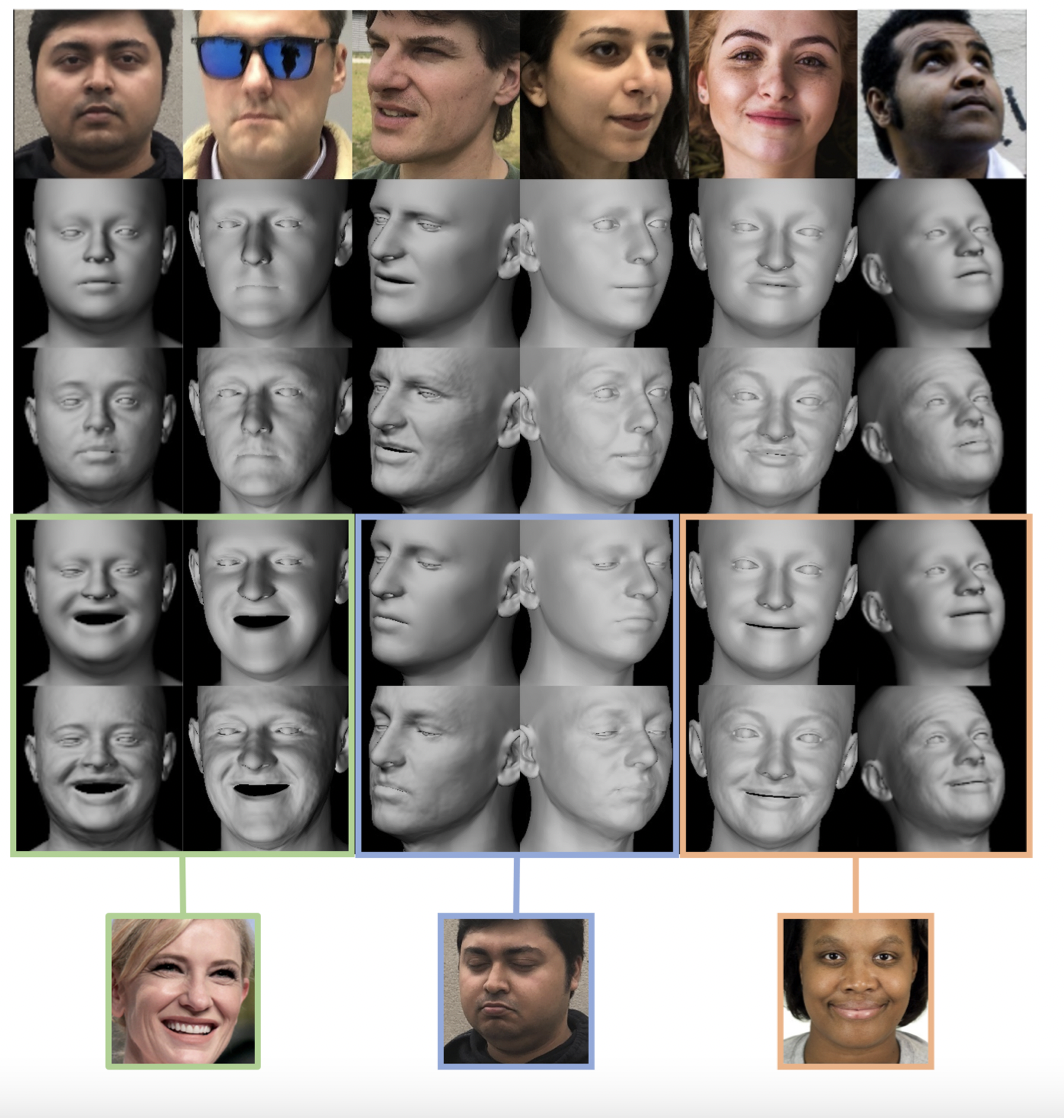
A new generative model called Visual Object Networks (VON), developed by MIT CSAIL researchers, synthesizes real-world photographs of objects with a disentangled 3D representation. They divided their picture production process into three conditionally independent factors—shape, viewpoint, and texture—drawing inspiration from traditional graphics rendering pipelines. They then offer an end-to-end adversarial learning framework that jointly models 3D shapes and 2D images. The VON is able to perform many 3D operations, including changing the viewpoint of a generated image, editing shape and texture, linear interpolation in texture and shape space, and transferring appearance across various objects and viewpoints, in addition to producing images that are more realistic than state-of-the-art 2D image synthesis methods.

The Max Planck Institute for Intelligent Systems researchers have developed the first method for regressing 3D facial form and animatable characteristics that are unique to a person yet change in response to expression. A regressor is trained to predict detail, shape, albedo, expression, pose, and illumination parameters from a single image, while their model, DECA (Detailed Expression Capture and Animation), is trained to robustly produce a UV displacement map from a low-dimensional latent representation that consists of person-specific detail parameters and generic expression parameters.
Open Source News:

The well-known Python library and open source data-validation framework Pydantic, which is used by some of the largest businesses in the world, has a new brand identity and the support of one of Silicon Valley's most illustrious venture capital (VC) firms. With $4.7 million in seed funding from Sequoia, ParTech, Irregular Expressions, and a number of angel investors, including Zapier co-founder Bryan Helmig, dbt Labs founder Tristan Handy, and Sentry co-founder David Cramer, Pydantic Services Inc. comes out of hiding today. Pydantic was first developed by London-based software engineer Samuel Colvin as an experiment back in 2017. Since then, the project has grown steadily and is now being used by programmers at top tech firms like Alphabet, Amazon, Apple, Meta, and Microsoft.

With its runtime application security platform for identifying vulnerabilities in open source components, Oligo Security made its covert launch public on Wednesday. Oligo creates a dynamic bill of materials (BOM), finds vulnerabilities in packages, and orders the fixing of vulnerabilities according to the context of the application. For the past few years, open source software components found in huge, intricate systems have been the source of some of the most destructive cyberattacks. In order to prioritize which vulnerabilities to patch first, Oligo generates a dynamic BOM that lists all the components that are actually in use. Oligo profiles each library's acceptable behavior and builds a database of its profiles. When library behavior deviates from the profile, the platform shoots alerts because that would be a sign of suspicious activity.